The history of the Boston Public Library unfolds as a compelling narrative, intertwining the cultural evolution of Boston with a commitment to knowledge, accessibility, and community enrichment.
Established in 1848, the library stands as a testament to Boston’s pioneering spirit, being the first publicly supported municipal library in the United States.
Beyond its architectural grandeur, the library’s story is a chronicle of innovation, inclusivity, and a steadfast dedication to serving as a beacon of learning for all.
From the introduction of groundbreaking cataloging systems to its role as a digital pioneer, the history of Boston Public Library reflects a dynamic journey through time, shaping the intellectual landscape of both the city and the nation.
History Of Boston Public Library
The Boston Public Library stands as a cultural cornerstone, embodying the intellectual legacy of Boston since its establishment in 1848.
As the third-largest public library in the United States, its history reflects the city’s commitment to knowledge, accessibility, and community engagement.
Here are some historical pieces of evidence that illuminate the rich history of the Boston Public Library:
Founding and Architectural Marvel (1848)
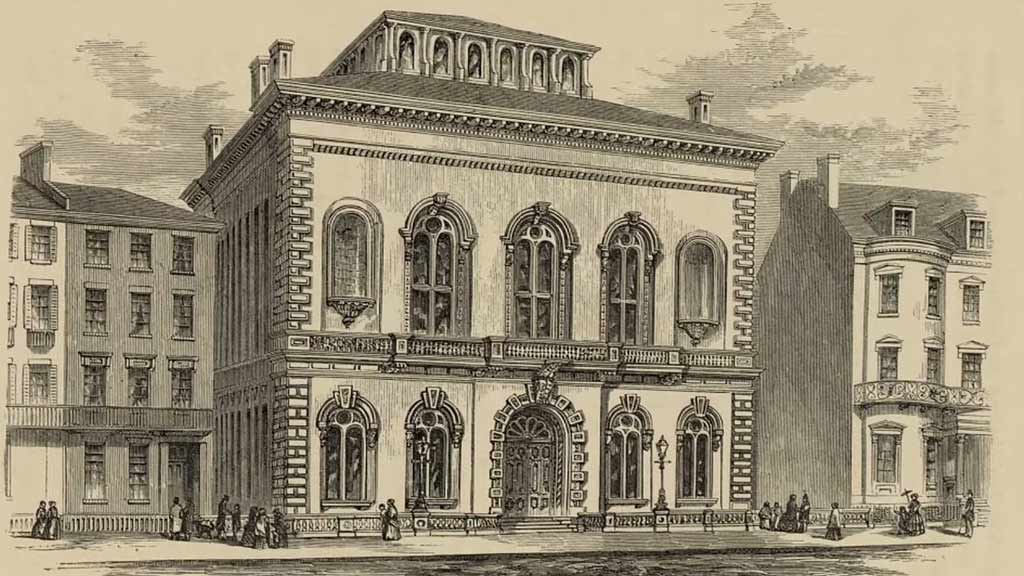
The Boston Public Library was founded in 1848, making it the first publicly supported municipal library in the United States.
The architectural marvel of the original Bates Hall opened in 1852, showcased the library’s commitment to providing a welcoming and grand space for the public to access knowledge.
McKim Building’s Renaissance Revival (1895)
The iconic McKim Building, designed by Charles Follen McKim and opened in 1895, marked a significant chapter in the library’s history.
Its Renaissance Revival architecture, inspired by classical design, exemplified a commitment to creating a cultural institution that reflected the grandeur of the city.
Expansion and Branch Libraries (20th century)
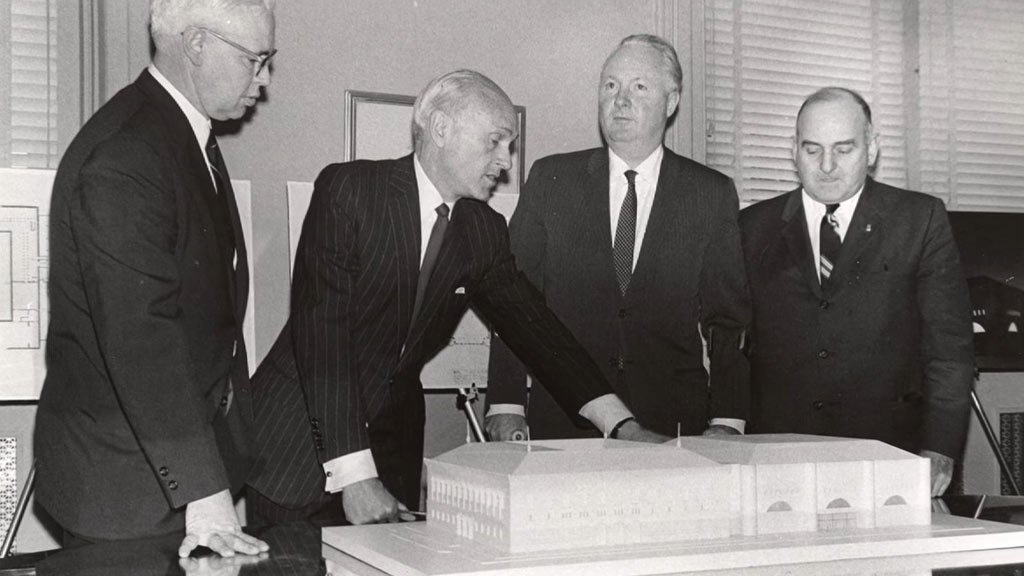
The 20th century saw the Boston Public Library’s expansion with the addition of branch libraries across the city.
These branches brought the library’s resources and services closer to diverse communities, embodying the institution’s dedication to accessibility and serving the educational needs of all residents.
Special Collections and Rare Manuscripts
The Boston Public Library houses an extensive collection of rare manuscripts and special collections, including the personal library of John Adams.
These treasures, carefully preserved and accessible to researchers, highlight the library’s role in safeguarding cultural heritage and fostering scholarly inquiry.
Digital Initiatives and Technological Innovation (21st century)
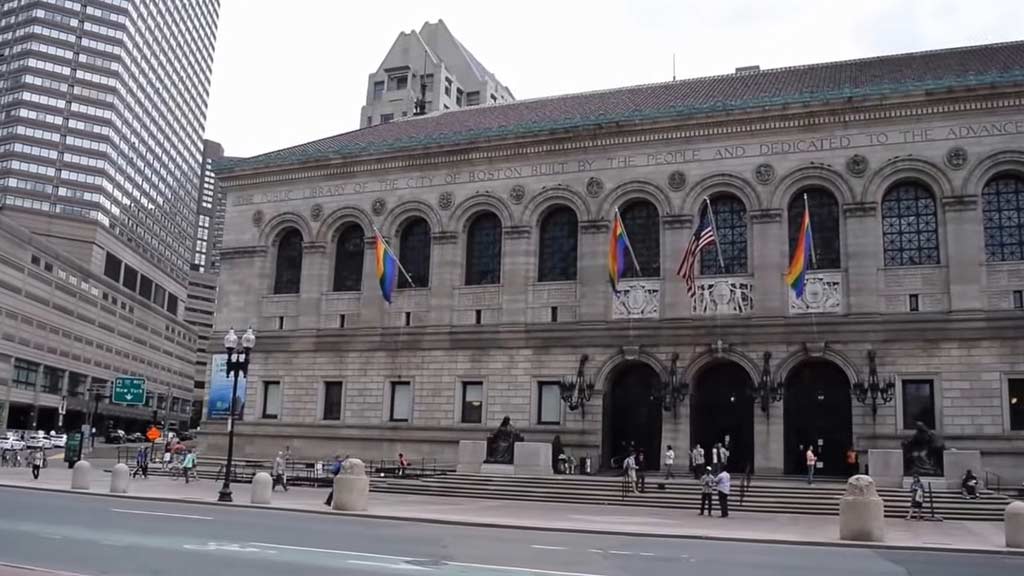
Embracing the digital age, the Boston Public Library has embarked on various technological initiatives in the 21st century.
The library offers digital resources, virtual programs, and online accessibility, showcasing its commitment to evolving with the times while preserving its traditional role as a guardian of knowledge.
Philanthropic Support and Expansion (19th century)
The Boston Public Library’s growth was significantly influenced by philanthropy. The dedication of individuals like Joshua Bates and the financial support from Andrew Carnegie facilitated the establishment of numerous branch libraries, expanding the institution’s reach and fostering a culture of learning throughout Boston communities.
Creation of the Special Libraries Department (1867)
In 1867, the Boston Public Library pioneered the concept of a Special Libraries Department, a groundbreaking initiative.
This department was designed to serve businesses, government agencies, and professionals, highlighting the library’s adaptability and forward-thinking approach to meeting the diverse informational needs of its users.
Literary Innovation The Card Catalog (1876)
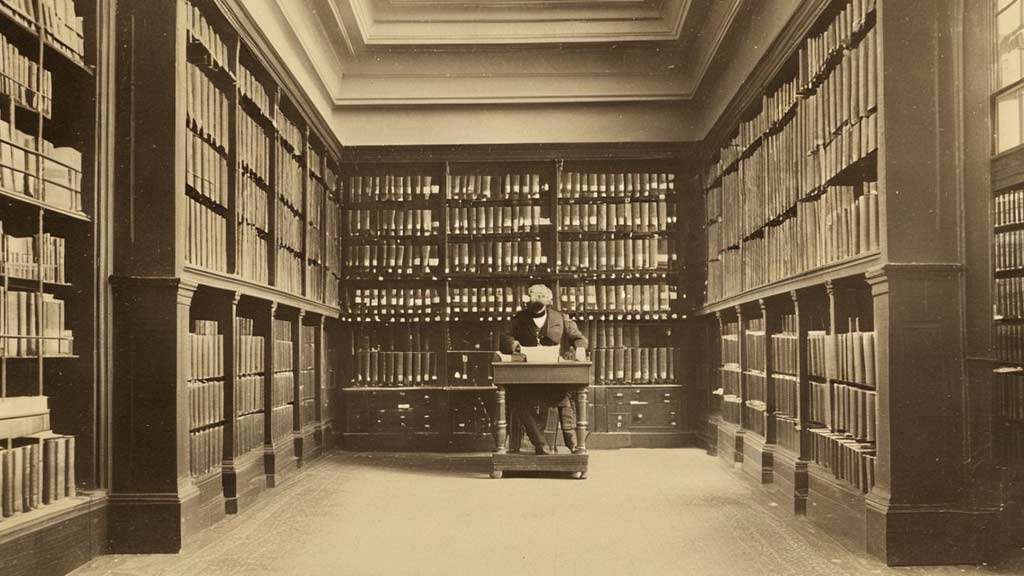
The introduction of the card catalog system in 1876 revolutionized the way patrons accessed and discovered books.
This innovative approach to cataloging became a model for other libraries worldwide, showcasing the Boston Public Library’s role as a trailblazer in organizing and democratizing access to information.
McKim Building’s Second Renaissance (1972)
The restoration and renovation of the McKim Building in 1972 marked a significant moment in the library’s history.
This endeavor not only preserved the architectural brilliance of the original structure but also ensured its continued relevance in the modern era, solidifying its status as a revered cultural institution.
Digital Commonwealth Partnership (21st century)
In the 21st century, the Boston Public Library has actively participated in the Digital Commonwealth initiative, digitizing a wealth of historical materials.
This collaborative effort enhances accessibility, allowing a global audience to explore and engage with the library’s vast collections, emphasizing a commitment to democratizing knowledge beyond physical boundaries.
Arts Department and Cultural Programming (20th century)
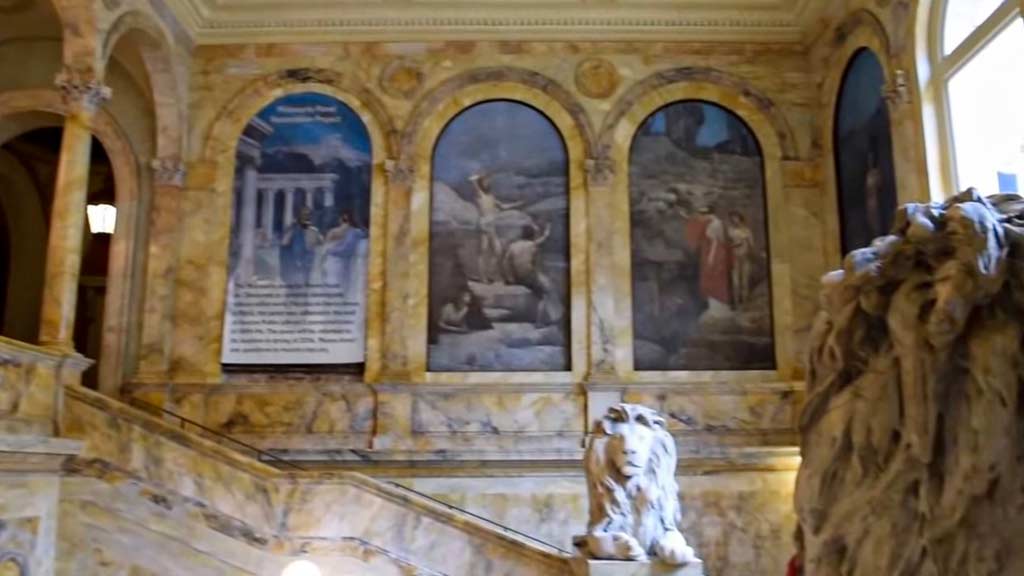
In the 20th century, the Boston Public Library expanded its cultural influence with the establishment of the Arts Department.
This department not only curated a diverse collection of visual arts but also pioneered cultural programming, hosting exhibitions, lectures, and events that celebrated the intersection of literature and the arts.
Preservation of Rare Books and Manuscripts
The library’s commitment to preserving rare books and manuscripts is exemplified by its Rare Books and Manuscripts Department. Housing treasures like medieval manuscripts and incunabula, this department safeguards invaluable cultural artifacts, emphasizing the library’s role as a custodian of humanity’s written heritage.
Inclusive Community Spaces and Services (21st century)
In the 21st century, the Boston Public Library has prioritized inclusivity, transforming into a dynamic community space.
From language learning programs to resources for job seekers, the library offers a range of services that reflect its dedication to meeting the evolving needs of a diverse and dynamic population.
Collaboration with Cultural Institutions
The Boston Public Library has fostered collaborations with various cultural institutions, including museums and archives. These partnerships enhance the library’s offerings, facilitating a broader range of resources and expertise for patrons.
Collaborations underscore the library’s role not just as a standalone entity but as a vital node in Boston’s cultural network.
Digital Storytelling and Oral History Projects
Embracing the digital era, the Boston Public Library has engaged in innovative projects like digital storytelling and oral history initiatives.
These endeavors capture and preserve the diverse narratives of Bostonians, ensuring that the library remains a living repository of not only books but also the stories and voices that define the city.
Why Is The Boston Public Library Famous?
The Boston Public Library has etched itself into the cultural fabric of Boston, standing as a revered institution since its founding in 1848.
Here are some reasons why the Boston Public Library is celebrated and esteemed:
Architectural Splendor of the McKim Building
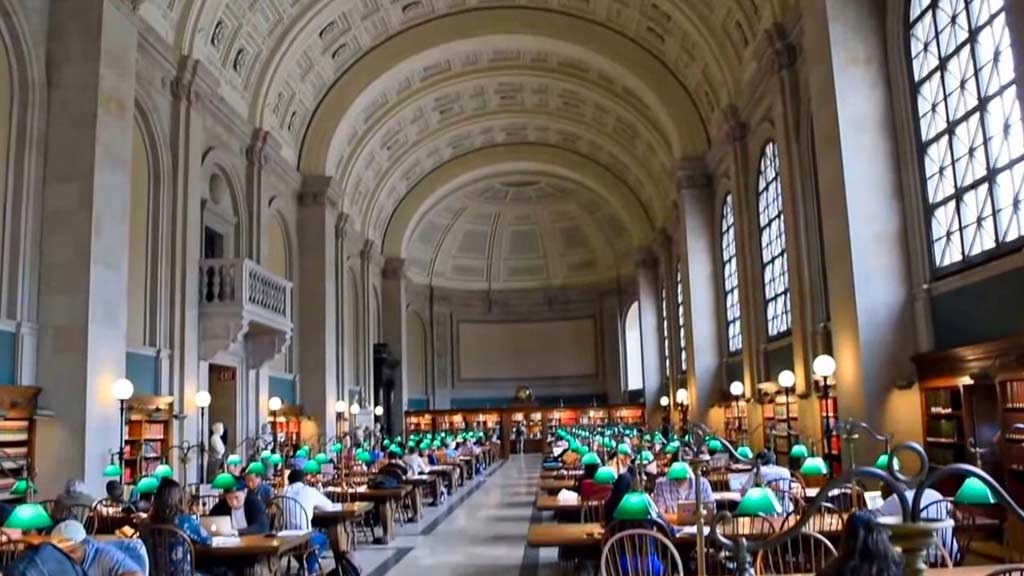
The McKim Building, the library’s main branch, is an architectural masterpiece designed by Charles Follen McKim. Opened in 1895, its Beaux-Arts style and grandeur captivate visitors.
The building’s iconic Bates Hall, crowned with a barrel-vaulted ceiling and surrounded by balconies of wrought iron, is a symbol of the library’s commitment to providing an inspiring space for intellectual pursuits.
Pioneering the First Publicly Supported Municipal Library
The Boston Public Library is celebrated as the first publicly supported municipal library in the United States, founded in 1848. This groundbreaking initiative signaled a paradigm shift, making knowledge accessible to all residents, regardless of social or economic standing.
The library’s early commitment to public access set a precedent for libraries across the nation.
Innovative Card Catalog System
In 1876, the Boston Public Library introduced the innovative card catalog system, revolutionizing the way patrons accessed and discovered books.
This pioneering approach to cataloging became a model for libraries worldwide, showcasing the institution’s commitment to staying at the forefront of library science and organization.
Digital Commonwealth Partnership and Accessibility
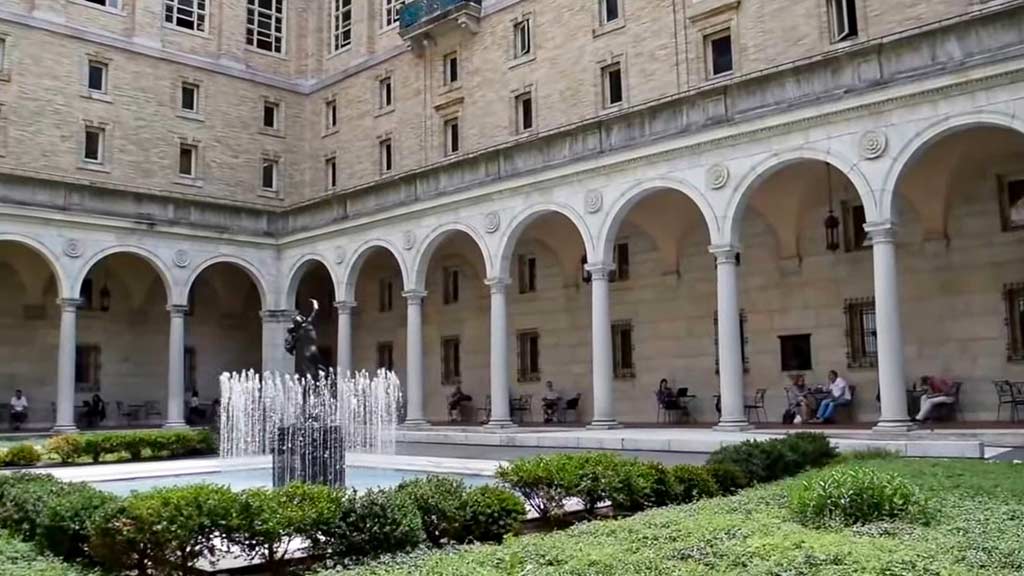
The library’s engagement in the Digital Commonwealth initiative underscores its commitment to accessibility in the digital age.
By digitizing vast collections, the Boston Public Library ensures global access to historical treasures, manuscripts, and artifacts, solidifying its reputation as a leader in leveraging technology to democratize knowledge.
Cultural Programming and Community Engagement
Beyond its role as a repository of books, the Boston Public Library is renowned for its diverse cultural programming and community engagement.
From art exhibitions to educational events, the library fosters a vibrant intellectual and social hub, connecting diverse communities and enriching the cultural landscape of Boston.
Cultural Heritage Preservation
The Boston Public Library is renowned for its commitment to preserving cultural heritage. The Rare Books and Manuscripts Department houses rare manuscripts, incunabula, and a significant collection of medieval manuscripts.
This dedication to safeguarding historical artifacts establishes the library as a guardian of human intellectual heritage.
Multilingual and Diverse Collections
Celebrated for its inclusivity, the Boston Public Library boasts multilingual collections that cater to the diverse population of Boston.
From books and periodicals to digital resources, the library ensures that its offerings reflect the city’s rich tapestry of languages and cultures, fostering an inclusive and accessible learning environment.
Educational Initiatives for All Ages
The library’s fame extends to its robust educational initiatives catering to all ages. From early childhood literacy programs to adult education courses, the Boston Public Library serves as a dynamic educational hub.
Workshops, lectures, and interactive learning experiences make the library a vibrant space for intellectual growth and exploration.
Civic Engagement and Advocacy
Beyond its role as a repository of information, the Boston Public Library actively engages in civic initiatives and advocacy.
By hosting community forums, author talks, and events addressing social issues, the library becomes a catalyst for meaningful dialogue and civic participation, reinforcing its status as a cultural and intellectual cornerstone.
Historic Special Libraries Department
The creation of the Special Libraries Department in 1867 solidified the Boston Public Library’s fame as an institution attuned to specialized information needs.
This innovative department catered to businesses, government agencies, and professionals, showcasing a forward-thinking approach to providing tailored resources for diverse fields of study and research.
The Boston Public Library’s fame rests not only on its architectural magnificence but also on its unwavering commitment to inclusivity, education, cultural preservation, and civic engagement.
As it continues to evolve, the library remains a dynamic force, embodying the ideals of intellectual freedom and community enrichment.
FAQs
How did the Boston Public Library contribute to library science?
In 1876, the library introduced the innovative card catalog system, revolutionizing how patrons accessed information. This pioneering approach became a model for libraries globally, showcasing the institution’s influence on library science.
What makes the McKim Building architecturally significant?
The McKim Building, opened in 1895, is a masterpiece designed by Charles Follen McKim in the Beaux-Arts style. Its architectural grandeur, highlighted by Bates Hall, has made it an iconic symbol of the Boston Public Library.
How has the library adapted to the digital age?
The Boston Public Library has actively embraced the digital era, participating in initiatives like the Digital Commonwealth.
By digitizing collections, it ensures global access to historical treasures, manuscripts, and artifacts, expanding its impact beyond physical boundaries.
How does the library preserve cultural heritage?
The Rare Books and Manuscripts Department of the library is dedicated to preserving cultural heritage.
It houses rare manuscripts, medieval manuscripts, and incunabula, safeguarding invaluable artifacts and contributing to the preservation of human intellectual heritage.
How does the Boston Public Library contribute to community engagement?
Beyond its role as a repository of books, the Boston Public Library actively engages in community outreach, hosting cultural programming, educational initiatives, and civic events.
This commitment fosters a sense of community and enriches the cultural and educational landscape of Boston.
Conclusion
The history of the Boston Public Library is a vibrant tapestry that mirrors the intellectual and cultural aspirations of Boston.
From its early days as a trailblazer in public library systems to its contemporary role as a digital hub, the library has remained an enduring symbol of enlightenment and community engagement.
The architectural marvels, innovative initiatives, and cultural preservation efforts underscore its legacy as a cherished institution.
As the Boston Public Library continues to evolve, its history serves as an inspiring testament to the transformative power of knowledge, ensuring that its impact resonates through the corridors of learning for generations to come.
Jaclyn Lowe